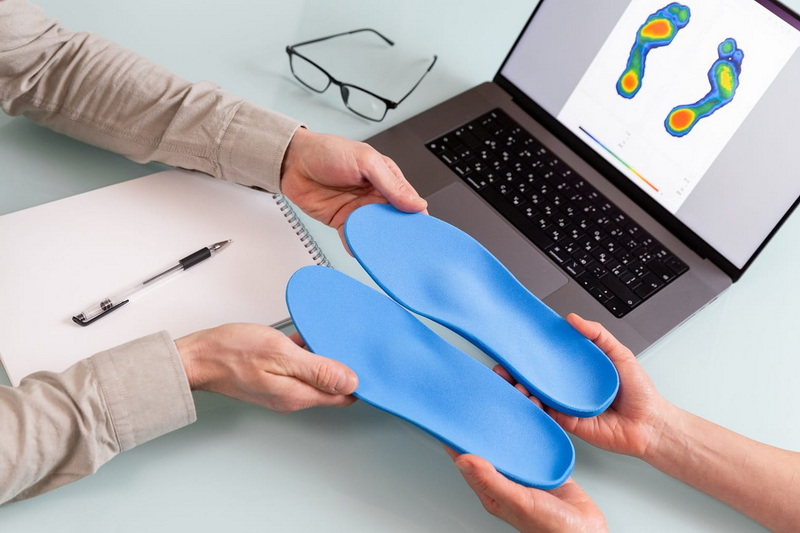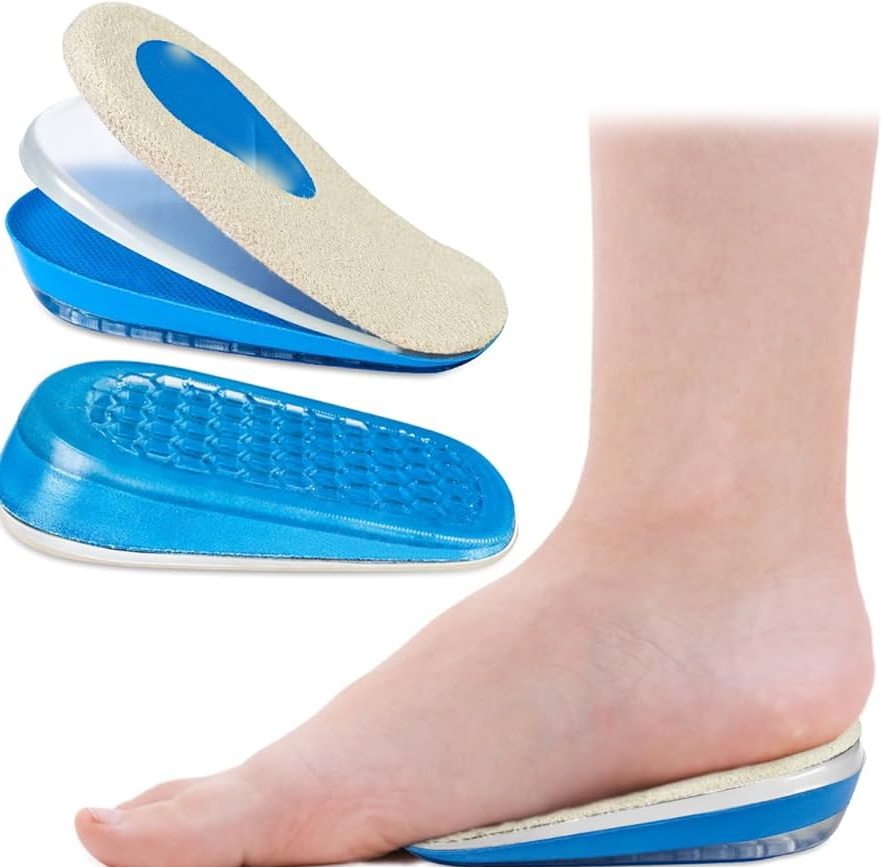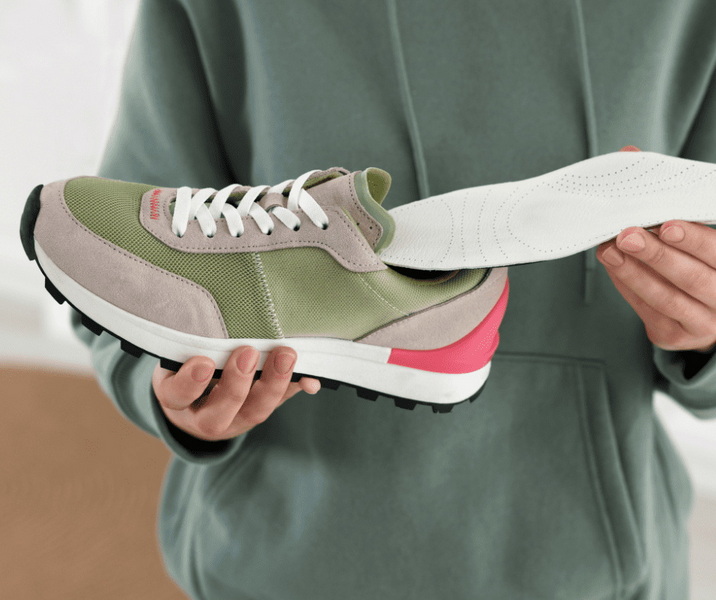Views: 222 Author: Edvo Publish Time: 2025-10-26 Origin: Site











Content Menu
● Is a MD Referral Required for Orthotics?
>> When a Referral is Not Required
>> When a Referral is Recommended
● The Custom Orthotics Manufacturing Process
● OEM Orthotic Manufacturing in China
● The Difference Between Custom and Over-the-Counter Orthotics
● Foot Conditions That Benefit from Orthotics
● Choosing the Right Material for Orthotics
● Understanding Insurance Coverage for Orthotics
● When to Consult a Medical Doctor or Podiatrist
● Orthotics Maintenance and Lifespan
● Expanding OEM Orthotics Business Opportunities
● Advantages of Collaboration With OEM Manufacturers
>> 1. Do I need a doctor's prescription for orthotics?
>> 2. What is the typical lifespan of custom orthotics?
>> 3. How often should I replace my insoles?
>> 4. Can one pair of orthotics fit all types of shoes?
>> 5. Are Chinese OEM orthotics reliable?
Foot health plays a crucial role in maintaining overall body alignment, balance, and comfort. Whether you're an athlete, a professional on your feet all day, or someone experiencing discomfort due to medical conditions, shoe orthotics can significantly improve your quality of life. But as interest in orthotic insoles grows, one common question continues to arise: Is a referral from a medical doctor (MD) required to obtain shoe orthotics?
Understanding when and why you might need a doctor's referral, as well as how orthotics are designed and sourced, can help you make informed decisions about your foot health and purchasing options. For global footwear brands, importers, or wholesalers, this knowledge is equally valuable when selecting reliable OEM partners for orthotic production.

Shoe orthotics, often referred to as insoles or footbeds, are specially designed inserts that fit inside shoes to offer structural support, cushioning, and alignment correction. They are commonly used to alleviate pressure points, correct abnormal gait, and prevent long-term musculoskeletal problems.
Main Functions of Orthotics:
- Realign foot posture and distribute body weight evenly.
- Support the arches and reduce strain on ligaments.
- Absorb shock and minimize pressure on joints.
- Aid recovery from injuries affecting the foot, ankle, knee, or back.
Common Uses:
- Flat feet or fallen arches
- Heel pain (plantar fasciitis)
- Bunions and calluses
- Diabetic foot care
- Sports performance enhancement
Orthotics are available in custom-made or prefabricated forms. Custom orthotics are fully tailored to an individual's foot shape, whereas prefabricated solutions come in standard sizes and are suitable for mild discomfort or preventive support.
The need for a doctor's referral depends largely on your reason for getting orthotics. For general comfort, athletic use, or mild support, a referral is not mandatory. You can purchase ready-made insoles or even order custom ones online. However, for medical-grade orthotics designed to address specific health issues, a professional evaluation may be necessary.
In many cases, individuals can acquire orthotics without visiting a physician. Several manufacturers accept direct orders using online platforms, where customers can upload their foot scans and receive personalized insoles. These self-service models are especially useful for:
- Retail consumers seeking comfort or posture improvement.
- Athletes looking for custom sports insoles.
- Footwear brands outsourcing OEM/ODM production.
A referral becomes essential if your orthotics need clinical approval for insurance coverage or if you have a medical condition requiring precise biomechanical correction. Doctors, especially podiatrists or orthopedists, can:
- Identify the root cause of pain through gait analysis.
- Determine specific corrections (overpronation, supination).
- Issue medical prescriptions that qualify for insurance reimbursement.
In summary, while not always required, an MD referral ensures you receive the most appropriate orthotic design for long-term relief if you suffer from chronic or medical foot conditions.
To appreciate the value of professional orthotics, it's helpful to understand how they are made—from foot scanning to precision engineering.
1. Foot Measurement or 3D Scanning:
Digital foot scanning captures precise arch heights, pressure points, and pronation angles. Some brands use foam impression kits for at-home customers.
2. Data Interpretation and Design:
CAD software converts foot data into a 3D orthotic model. Adjustments are made for arch rigidity, cushioning depth, and heel alignment.
3. Material Selection:
Common materials include EVA, TPU, PU, and gel layers. Combinations of these materials balance flexibility and durability.
4. Prototyping and Adjustment:
Before mass production, sample pairs are tested for comfort and performance. Corrections are made to fine-tune fit and arch positioning.
5. Final Production and Quality Control:
OEM factories use CNC cutting, vacuum forming, and lamination processes to ensure precision. Each batch undergoes inspection for consistency and durability.
6. Brand Customization:
For footwear brands and wholesalers, OEM manufacturers add private labeling, logo printing, and custom packaging before delivery.
This process emphasizes how scientific precision and craftsmanship combine to produce orthotics that deliver both comfort and corrective support.
China has become a global hub for custom orthotics and insole production due to its advanced manufacturing infrastructure and competitive pricing. Partnering with a Chinese OEM orthotics supplier offers several benefits:
- Comprehensive Product Range: From memory foam insoles and gel pads to high-performance EVA orthotics, factories support diverse applications across medical, sports, and fashion segments.
- Private Label and Branding Options: Companies can integrate their logo, colors, and unique design elements into each insole.
- Flexible Order Quantities: Both small startup brands and global distributors can negotiate low MOQs for new product launches.
- Integrated R&D and Engineering: Chinese OEMs provide in-house CAD modeling and biomechanics testing for optimized support design.
- Eco-Friendly Solutions: Many factories now use sustainable ETPU or biodegradable foam materials to meet international environmental standards.
OEM cooperation allows global businesses to combine medical technology with commercial scalability.
| Feature | Custom Orthotics | Over-the-Counter Insoles |
|---|---|---|
| Fit Accuracy | Tailored for each foot based on individual scans | Standard fit and sizes |
| Purpose | Correct medical or structural issues | General comfort and cushioning |
| Durability | 2–5 years | 6–12 months |
| Material Quality | Medical-grade EVA, PU, or carbon composite | Standard foam or gel |
| Cost | Higher investment | Budget-friendly |
| Insurance Coverage | Often requires prescription | Usually self-paid purchase |
For patients with persistent pain or special foot shapes, custom orthotics remain the superior choice. Prefabricated options, however, serve as affordable solutions for mass-market retail and early intervention.
Custom orthotics can improve posture and balance for several specific conditions:
- Plantar Fasciitis: Alleviates heel pressure by redistributing weight.
- Flat Feet: Supports collapsed arches to reduce strain on tendons.
- High Arches: Adds cushioning to minimize shock absorption issues.
- Metatarsalgia: Reduces forefoot pain through targeted padding.
- Diabetic Foot: Provides extra cushioning to prevent ulcers.
- Sports Injuries: Stabilizes movement and reduces risk of repetitive strain.
Material selection determines comfort, flexibility, and lifespan. Common options include:
- EVA (Ethylene Vinyl Acetate): Lightweight, flexible, and shock-absorbent.
- PU (Polyurethane): Highly durable with strong elasticity for long-term use.
- TPU (Thermoplastic Polyurethane): Ideal for stability control and athletic performance.
- Gel: Provides superior cushioning for sensitive feet.
- Cork or Leather: Natural and breathable, suitable for premium insoles.
For OEM clients, combining materials—such as EVA with a gel heel and TPU stabilizer—creates hybrid solutions that fit diverse end-user needs.
Insurance policies vary widely by country and provider. In general:
- If orthotics are prescribed by a physician for a diagnosed condition, they are often partially or fully covered.
- If purchased for comfort or performance, reimbursement is rarely available.
- Some private insurers offer annual footwear allowances that include insoles under medical equipment benefits.
Before buying custom orthotics, consumers should contact their insurer to clarify documentation requirements. A prescription or doctor's note may be necessary for claim approval.
Even if not required for purchase, professional consultation can prevent long-term damage. You should visit a doctor if you experience:
- Chronic heel, ankle, or knee pain.
- Misalignment causing hip or lower-back discomfort.
- Diabetic wounds or numbness in the feet.
- Sudden swelling, inflammation, or injury.
Doctors can prescribe orthotics with precise correction angles, ensuring not only comfort but also medical efficacy.
Proper maintenance enhances durability and hygiene:
- Remove orthotics regularly to air-dry after use.
- Clean gently with a damp cloth and mild soap.
- Avoid exposure to direct sunlight or high heat sources.
- Replace them when visible deterioration affects balance or support.
With correct use, good-quality orthotics last between two to five years, making them a cost-effective investment in health.
For brands and importers, the orthotics industry offers multiple opportunities for expansion:
- Custom Sports Solutions: Partner with OEM factories to develop sport-specific orthotics for running, basketball, or cycling.
- Children's Orthotics: Growing demand among pediatric users creates a profitable niche market.
- Sustainable Footwear Accessories: Develop biodegradable or recyclable insole lines matching global eco trends.
- Smart Orthotic Technology: Integrate pressure sensors and app tracking for performance analysis.
OEM partners in China often provide R&D insight that helps international companies innovate quickly without large infrastructure costs.

Working alongside reliable OEM orthotics producers ensures consistent quality and scalable operations. The most consistent advantages include:
- Cost-effective production compared to in-house manufacturing.
- Stable product performance and seamless supply chain management.
- Access to advanced technologies like CNC contour cutting and 3D printing.
- compliance with international testing standards such as ASTM and ISO.
For growing brands, outsourcing orthotics production frees up resources for marketing, design, and market expansion.
In most cases, the answer is no. For comfort-focused or preventive insoles, you can order directly from manufacturers or retail stores. However, if your goal is to treat medical conditions or seek insurance reimbursement, consulting a doctor ensures professional assessment and the right product selection.
Whether you are an individual looking to ease foot discomfort or a global brand sourcing high-performance insoles, orthotics provide an intelligent way to enhance comfort and health simultaneously. With China's advanced OEM production systems, obtaining quality orthotics has never been more accessible, affordable, and customizable.

Not necessarily. Most people buy orthotics directly for comfort or sports support. However, prescriptions are useful for medical-grade corrections and insurance claims.
On average, custom orthotics last from two to five years, depending on materials, weight load, and activity level.
Replace them once you notice decreased cushioning or uneven wear. Athletes may need new pairs more frequently due to extended use.
Not always. You may need multiple pairs for different shoe styles such as dress shoes, running sneakers, or work boots. OEM factories offer tailored designs for various footwear types.
Yes. Many Chinese factories produce high-quality orthotics for global brands. They use advanced machinery, medical-grade materials, and quality assurance systems that meet international standards.